Endangered Azuero howler monkeys, tadpoles, bats, birds, insects, and beautiful wildlife, all in the school yard
April 2022. Headed to the airport after more than 2 years of pandemic restrictions was an exciting change. Finally, an opportunity to work with children again on conservation in primate-habitat communities!
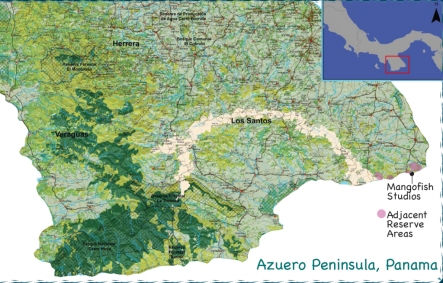
Landing in Panama City, we drove SW down the Azuero Peninsula to arrive in Los Santos district on the land tip that reaches into the Pacific Ocean. This area is home to a number of reserves, both private and national. There is a deep network of conservationists working to reforest great corridors of traditional ranch lands to restore the connection between these forested areas and protect the vulnerable biodiversity within.
Living in these remaining pockets of forest are 3 species of primates –
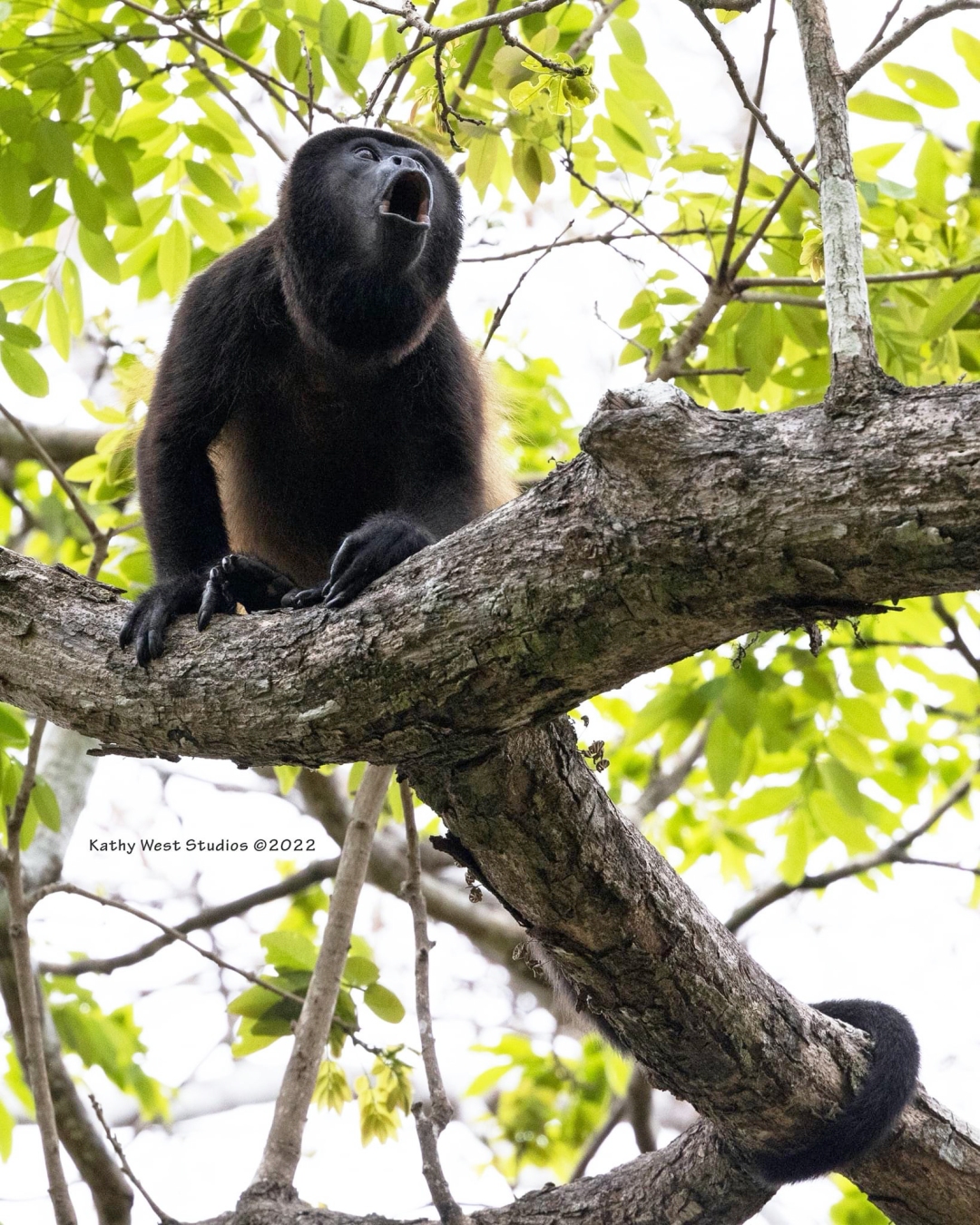
The Panamanian White-throated capuchin (Cebus imitator) (IUCN threatened and decreasing);
The Azuero howler monkey (Alouatta palliata ssp. trabeata) (IUCN endangered and decreasing) (pictured here, PC: Kathy West)
The Azuero spider monkey (Ateles geoffroyi ssp. azuerensis) (IUCN critically endangered) with only an estimated 170 individuals remaining (unofficial, personal communication with local conservation organization conducting recent surveys).
In Panama, our PICC team members Stuart Hooper and Tammy Rowe at Mangofish Studios (Los Panamaes, Azuero peninsula) helped us to make arrangements with 2 schools in the area. Fifteen elementary-aged children at a small, rural school in Cañas were our first PICC program in Panama.
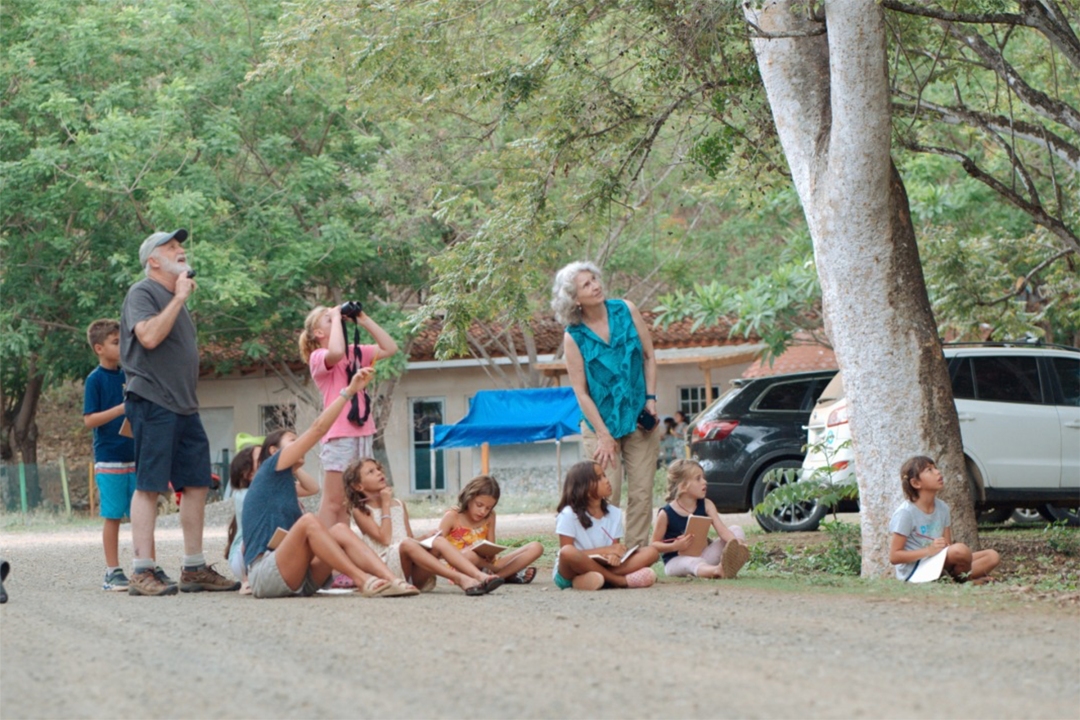

The students learned scientific journaling the first day, and practiced on a thrush’s nest in the eves of the school building, tadpoles at the base of the waterfalls, beautiful white-lined bats in the tower, and Azuero howler monkey families in the huge trees. A little excitement happened when we were busy watching the monkeys overhead and a semi-wild horse came galloping down the road! The students took it in stride like it must happen often and we went on watching the monkeys.
On the second day, we came equipped with a suitcase full of DSLR Canon cameras with zoom lenses. After an introduction on taking photographs and how to handle the camera, the students took turns excitedly exploring the school’s forest with an eye towards discovery and making images. The monkeys were quite cooperative and spent their morning playing, napping and nursing, captured all on the cameras by the children.
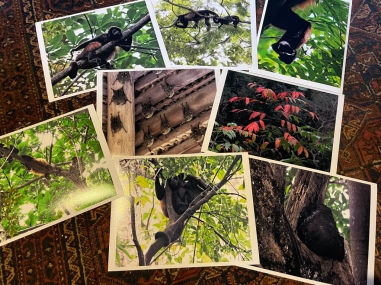
This quick trip to launch the PICC program in Panama was promising. We’ve barely dipped our toe in the pool of students living alongside these endangered primates, but we have plans to return to the area next year and include many more schools, students, teachers and parents. We also made connections and held a morning program with a group of young children in Pedasi, with plans to go back in 2023 and work with more children in this school. A very exciting connection was made with the conservation group Pro Ecologica Azuero and we are scheduled to return and do a photography program with their conservation club students in early 2023.
“The kids had so much fun and learned a lot. Thanks again for this special project. Looking forward to next year!” Mandy, 2nd grade teacher
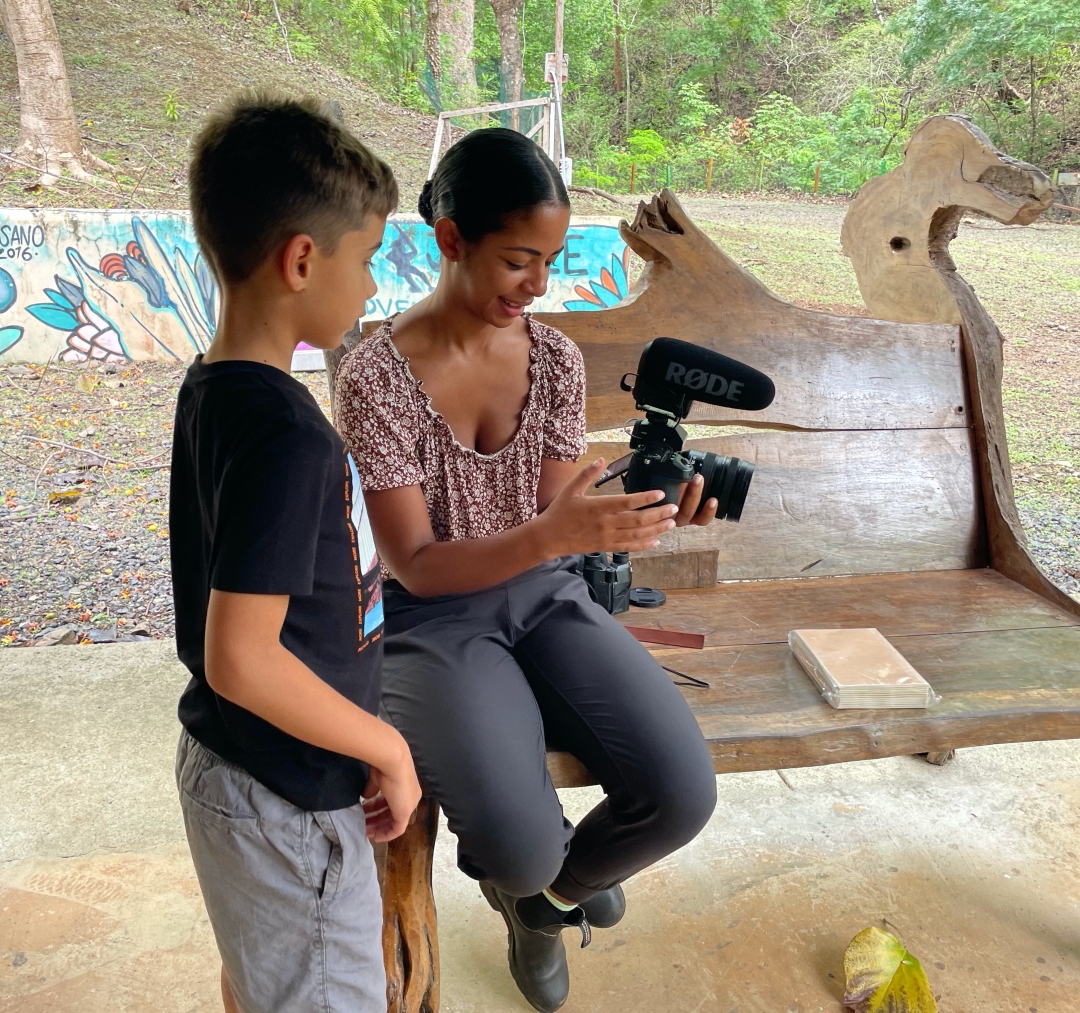
Tammy had an extraordinary talent for organizing and directing the children, while simultaneously filming the event. Each child in her group was able to take photos of all of the unique ecosystems we were looking at— forest monkeys and birds, bats, and tadpoles and other animals in the stream.
Special thanks to Stuart Hooper, Tammy Rowe, and Ed West for the program assistance, and Mangofish Studios for hosting us.
Thank you to teachers Mandy and Kelly, and school administrator Aya, for their assistance in making this PICC program a success!
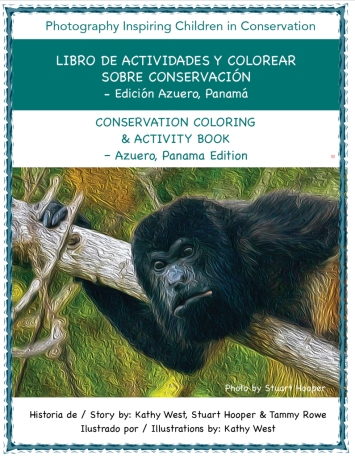
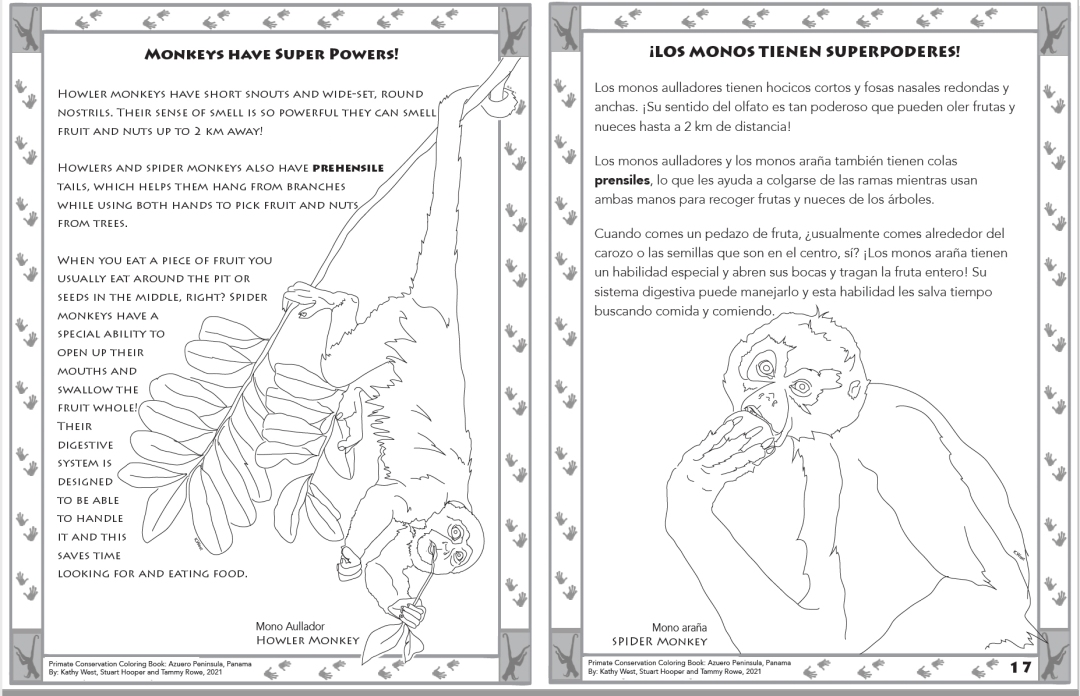
For more information about the Azuero howler monkey see: IUCNredlist.
